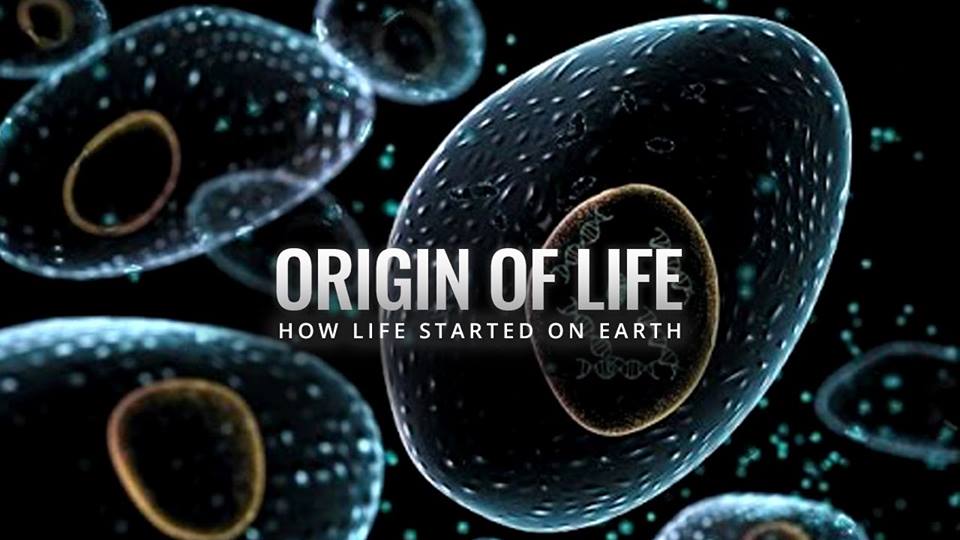The earth was formed about five billion years ago. At that time it was extremely hot. The existence of life in any form at that high temperature was not possible. As such, two questions arise pertaining to life:
1. How did life originate on earth?
2. How did primitive organisms evolve into new forms resulting in the evolution of a variety of organisms on earth?
Origin of life means the appearance of simplest primordial life from nonliving
matter.
Evolution of life means the gradual formation of complex organisms from
simpler ones.
Chemosynthetic Theory of Origin of Life
Several theories have been put forth to explain the origin of life. The widely accepted theory is the Chemosynthetic theory of origin of life, proposed by A.I. Oparin. Other theories such as the theory of Spontaneous Generation are of historical importance only.
Chemosynthetic Theory
Life might have originated at first on earth through a series of combinations of chemical substances in the distant past and it all happened in water.
- The earth originated about 5 billion years ago.
- It was initially made up of hot gases and vapours of various chemicals.
- Gradually it cooled down and a solid crust was formed.
- The early atmosphere contained ammonia (NH3), water vapour (H2O), hydrogen (H2), methane (CH4). At that time there was no free oxygen. This sort of atmosphere (with methane, ammonia and hydrogen) is still found on Jupiter and Saturn
- Heavy rains fell on the hot surface of earth, and over a very very long period the water bodies appeared that still contained hot water.
- Methane and ammonia from the atmosphere dissolved in the water of the seas.
- In this water, chemical reactions occurred and gave rise to amino acids, nitrogenous bases, sugars and fatty acids which further reacted and combined to give rise to biomolecules of life such as proteins and nucleic acids.

Probable stages in the origin of life
First stage
The sources of energy were the ultraviolet rays or electric discharge (lightning) or heat. Either alone or a combination of these energy sources caused reactions that produced complex organic compounds (including amino acids) from a mixture of ammonia (NH3), methane (CH4), water (H2O) and hydrogen (H2). The amino acids are the building blocks of proteins which are the main components of protoplasm.
Stanley Miller and Harold C. Urey in 1953 set up an experiment with an air-tight apparatus in which four gases (NH4, CH4, H2 and H2O) were subjected to an electric discharge for one week. On analyzing the liquid, they found a variety of organic substances in it, such as amino acids, urea, acetic acid, and lactic acid
Second Stage
Simple organic molecules combined to form large molecules which included peptides (leading to the formation of proteins), sugars, starch and fat molecules.
Third stage
The large molecules of different kinds combined together to form multi-molecular heaps or complexes. Some simple fat molecules arranged themselves around this molecular complex in a sort of membrane. It was observed in the laboratory experiments that when such complexes reached a certain size they separated from the surrounding solution in the form of what were termed “coacervate drops” of microscopic size, moving in the liquid with a definite boundary (coacervate means “heap” referring to the combining together of the molecules).
Coacervate like aggregates were probably the precursors of the first living
cells.

Now, some sort of “metabolism” could occur within these coacervates with synthesis of certain substances and breakdown of others. The latter (i.e. breakdown reactions) could provide energy.
Some of the earliest formed proteins might have acted like enzymes and would have affected the rates of reactions. It is also believed that RNA molecules might have shown enzymatic activity in the “primordial soup” of chemical compounds. Such molecules have been termed ribozymes.
Fourth stage
Some sort of nucleoproteins or nucleic acids may have evolved by random combinations which have provided two more properties to coacervate–like bodies.
These include :
(i) chemical reactions from the nucleic acids, and
(ii) the capacity to reproduce through duplication of the nucleic acids (Fig.).
Thus, cells were produced that could be called the simplest primordial life. Figure depicts the probable stages of origin and evolution of living beings.
The primitive “drop”–like forms of life were all heterotrophs, unable to manufacture their own food but derived it from environment.
- One of the innumerable changes in genetic make up of the primitive heterotrophs led to the formation of chlorophyll (green colouring matter of the leaves)
molecules - The chlorophyll–bearing units of life for the first time started using solar energy for production of food as well as for the first time started liberating free oxygen into the atmosphere.
Early atmosphere of earth had no free oxygen, the forms until then could at best be only “anaerobic”. Chlorophyll–bearing organisms later released free oxygen which gave greater possibilities for life to evolve.

Thus, the simplest form of life originated through four main stages. Thereafter, a wide variety of organisms came into existence through biological evolution.





Leave a Reply
You must be logged in to post a comment.